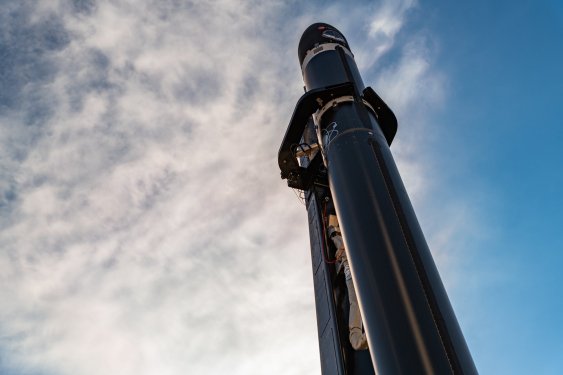Rocket Lab is set to launch two small satellites for NASA as part of the PREFIRE (Polar Radiant Energy in the Far-InfraRed Experiment) mission. The primary objective of this mission is to gather data on how much far-infrared energy is emitted at the poles and how those emissions change throughout the day and year.
Understanding Far-Infrared Energy
Far-infrared energy is a poorly understood portion of Earth’s energy spectrum, despite its significant contribution to the planet’s overall energy balance. In fact, nearly 60% of Arctic emissions occur at these wavelengths. This lack of understanding can have significant implications for climate modeling and our ability to predict how a warming climate will affect massive ice shelves at Earth’s poles.
The PREFIRE Mission
The two small satellites, each approximately the size of a bread loaf, will be equipped with a miniaturized instrument called a thermal IR spectrometer. This instrument is capable of measuring the temperature and spectral characteristics of objects in their environment, allowing scientists to collect detailed data on far-infrared energy emissions.
Data Collection and Analysis
The data collected by the PREFIRE mission will be compared to conditions in cloud cover and sea ice levels below. By analyzing these data sets, scientists hope to generate more accurate climate models that take into account the complex interactions between Earth’s atmosphere and oceans.
Launch Details
Rocket Lab will use its Electron rocket to carry the two CubeSats to near-polar orbits, where they will collect data for at least 10 months. The launches are scheduled to take place from Rocket Lab’s launch site on Mahia Peninsula, New Zealand in May 2024. Due to the specific requirements of the mission, the launches will likely occur in rapid succession.
NASA’s Venture-Class Acquisition of Dedicated and Rideshare (VADR) Program
The PREFIRE mission was awarded a launch contract as part of NASA’s VADR program, a massive contract vehicle with a budget of $300 million across five years. The program aims to put NASA payloads on commercial rockets, allowing for more efficient and cost-effective launches.
Launch History and Contract Value
This will be the seventh and eighth launch conducted by Rocket Lab on behalf of NASA since 2018. Earlier this year, the company successfully placed four storm-watching satellites into orbit as part of the VADR program. However, the exact value of the launch contract has not been disclosed.
The Importance of PREFIRE
The PREFIRE mission is a crucial step towards unraveling the mystery of far-infrared energy at Earth’s poles. By providing more accurate data on this poorly understood portion of Earth’s energy spectrum, scientists hope to generate more accurate climate models that can better predict how a warming climate will affect massive ice shelves.
Conclusion
Rocket Lab’s upcoming launch of the PREFIRE mission is a significant step forward in our understanding of far-infrared energy emissions at Earth’s poles. With its miniaturized thermal IR spectrometer and CubeSat design, this mission has the potential to revolutionize our understanding of this complex phenomenon.
The Science Behind Far-Infrared Energy
Far-infrared energy is an important component of Earth’s energy balance, but it remains a poorly understood portion of the planet’s overall energy spectrum. This lack of understanding can have significant implications for climate modeling and our ability to predict how a warming climate will affect massive ice shelves.
What is Far-Infrared Energy?
Far-infrared energy refers to the range of electromagnetic radiation with wavelengths between 15 and 1000 micrometers (μm). This portion of the spectrum includes a wide range of frequencies, from low-energy long-wave radiation to high-energy short-wave radiation.
Importance of Understanding Far-Infrared Energy
Understanding far-infrared energy is crucial for accurate climate modeling. By analyzing data on far-infrared energy emissions at Earth’s poles, scientists can better predict how a warming climate will affect massive ice shelves and other polar ecosystems.
Current Research Efforts
Several research efforts are currently underway to better understand far-infrared energy emissions at Earth’s poles. These studies include the use of satellite-based instruments, such as the Thermal IR spectrometer on the PREFIRE mission, to measure temperature and spectral characteristics.
The Challenges of Launching Small Satellites
Launching small satellites like the CubeSats used in the PREFIRE mission requires specialized expertise and equipment. The unique requirements of these missions can be challenging to meet, especially when compared to launching larger spacecraft.
The Importance of Miniaturized Instruments
Miniaturized instruments like the thermal IR spectrometer on the PREFIRE mission are crucial for small satellite missions. These instruments allow scientists to collect high-quality data while minimizing the size and weight of the spacecraft.
The Role of Commercial Launch Providers
Commercial launch providers like Rocket Lab play a critical role in launching small satellites. Their expertise and resources can help meet the unique requirements of these missions, allowing scientists to focus on collecting data rather than worrying about logistics.
The Future of Small Satellite Missions
Small satellite missions like PREFIRE are becoming increasingly important for scientific research and exploration. As technology advances, it is likely that we will see even more complex and ambitious small satellite missions in the future.
The Potential for Future Research
The data collected by the PREFIRE mission will be a valuable resource for scientists studying far-infrared energy emissions at Earth’s poles. However, there are many other areas where small satellite missions can make significant contributions to our understanding of the universe.
Conclusion
The PREFIRE mission is an exciting example of the potential of small satellite missions for scientific research and exploration. By launching two CubeSats with miniaturized thermal IR spectrometers, scientists will be able to gather valuable data on far-infrared energy emissions at Earth’s poles.
NASA’s Venture-Class Acquisition of Dedicated and Rideshare (VADR) Program
The VADR program is a significant development in the field of space exploration. By partnering with commercial launch providers like Rocket Lab, NASA can ensure that its payloads are launched efficiently and effectively.
The Benefits of the VADR Program
The VADR program has several benefits for NASA and the scientific community. It allows for more efficient and cost-effective launches, enables smaller payloads to be launched, and provides a range of options for launch windows and trajectories.
Conclusion
The PREFIRE mission is an exciting example of the potential of small satellite missions for scientific research and exploration. By launching two CubeSats with miniaturized thermal IR spectrometers, scientists will be able to gather valuable data on far-infrared energy emissions at Earth’s poles.
Conclusion
The PREFIRE mission is a significant step forward in our understanding of far-infrared energy emissions at Earth’s poles. With its miniaturized thermal IR spectrometer and CubeSat design, this mission has the potential to revolutionize our understanding of this complex phenomenon.















